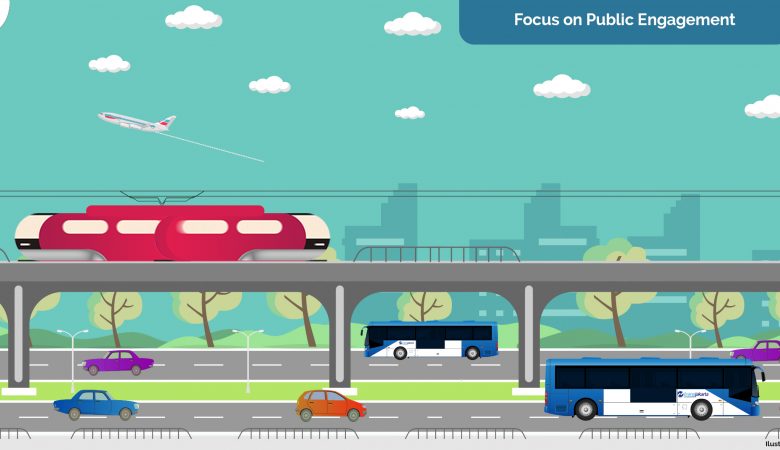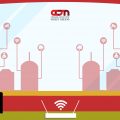COVID19 has brought considerable hurdles to cities around the world, but has accelerated the wave of innovation that continues after the crisis, showing a new study, "Smart City Solutions for a Riskier World." A study by ESI Thought Lab, sponsored by Oracle, Deloitte, Intel, and others, highlights the important role of technology, data, cybersecurity, and public-private partnerships in ensuring the future of post-pandemic citizen health, safety, and prosperity.
The August and September 2020 survey included a survey of senior officials from 167 cities in 82 countries, including Asia, North America, Latin America, MENA, Europe, and Africa. Cities accounted for 526 million people, or 6.8% of the world's population, ranging from less than 1 million (39% of cities) to nearly 27 million. 53% of these big cities are in emerging countries and 47% are in developed countries. Cities were evaluated and categorized based on the progress of two categories. Progress of application of smart solutions. Cities were rated as "Beginner," "Intermediate," or "Leader." Progress of the United Nations Sustainable Development Goals (SDGs). Cities are categorized as "performers," "pioneers," or "sprinters." Cities that excel in both areas are called Cities 4.0. It is defined as a hyper-connected city that is sustainable and far more advanced in the use of technology, data, and public involvement.
Until recently, City Guides viewed intelligent technology primarily as a tool to be more efficient behind the scenes. Today, this technology is being introduced directly into the lives of the inhabitants. Smartphones are the key to the city, instantly holding millions of information about traffic, traffic, medical services, safety alerts, and community news. After 10 years of trial and error, community leaders have realized that smart city strategies start with people, not technology. “Smartness” is more than just installing digital interfaces on traditional infrastructure and streamlining the operation of cities. It is also important to use technology and data in a targeted way to make better decisions and achieve a better quality of life.
Quality of life can vary from the air that residents breathe to the peace of mind they feel when walking down the street. The latest report from the McKinsey Global Institute (MGI): Smart Cities: Digital Solutions for a More Liveable Future (PDF-6 MB) Dozens of Digital Applications Make Dozens of Digital Applications Such Practical and Very Human Concerns We are analyzing how we are dealing with it. She states that by using smart technology, cities can improve some major quality of life indicators by 10-30%. This is a number that saves lives, reduces crime, shortens travel, reduces health impacts, and avoids CO2 emissions. One of the most exciting things about smart city technology is that it encourages residents to become more involved. Common examples include apps that allow citizens to easily report local issues, and community network platforms that allow neighbors to connect and share resources. In another example, cheap environmental test kits encourage residents to collect local environmental data. The Smart Citizen Kit can be placed in locations such as balconies and window frames to collect data about the local environment such as air pollution and noise. The data is streamed to online platforms to effectively map crowdsourced data from around the world.
A new model was released last year. Instead of the technology-driven provider approach (Smart Cities 1.0) and city-driven technology-based models (Smart Cities 2.0), major smart cities are beginning to adopt citizen participation models to drive the next generation of smart cities. increase. For example, Vienna is a major city that is regularly ranked at the top of the annual smart city rankings. The 2.0 model is still quite active, and like Barcelona, there are over 100 active smart city projects. However, some of these projects have different sensations. For example, in partnership with the local energy company Wien Energy, Vienna has included citizens as investors in local PV systems as a contribution to the city's renewable energy goals for 2050. It also focuses on affordable housing and public involvement in gender equality. Vancouver led one of the most ambitious joint strategic development initiatives by involving 30,000 citizens in developing the Vancouver Greenest City 2020 Action Plan. And Barcelona recently completed an innovation project (called the BCN Open Challenge). In this project, the city unveiled six challenges and used its private platform, Citymart, to gather ideas from local and global citizens and innovators.
Smart City 3.0 is not just for cities in developed countries. It is impossible to talk about smart cities 3.0 without talking about another Latin American pioneer, Medellín. Winner of the Urban Land Institute's Innovative City of the Year Award, Medellín is a city from scratch by involving citizens of the city's most vulnerable areas into transformation projects such as cable cars, electric staircase projects, and new technology-enabled schools. We have focused on reproduction, Library. Medellín has recently expanded its commitment to citizen innovators by supporting the development of a formidable innovation district (Ruta N) to attract and retain entrepreneurial talent. As Medellín showed, smart cities 3.0 also seem to be more focused on issues of fairness and social inclusion. The emergence of shared cities is an example of how cities create the conditions that enable shared activities in the region. Large venture support platform companies like Airbnb and Uber aren't always in line with the vision of Smart Cities 3.0, but other things like repair cafes, home repair tool rental libraries, and bike-sharing services. Many projects not only optimize but also improve the quality of life of all residents, not just idle resources. Cities like Amsterdam and Seoul seem to play a leading role in promoting sharing activities among citizens and promoting sharing of startups.
Can cities move to different generations or work in different generations?
The answer is that I believe that some cities literally go through all stages over time. Kansas City seems to be a city that went straight from smart city 1.0 to smart city 3.0. This was the first city to work with Google to get the right to install Google Fiber throughout the city. In my opinion, this was actually a technology-driven initiative, Smart Cities 1.0, from the beginning, but the city just pushed it forward and looked for ways for governments to deliver digital services on gigabit infrastructure. Instead of embracing change (Smart Cities 2.0), it can be improved, but how can this infrastructure help drive public participation and the organic growth of the local entrepreneurial ecosystem?
also believe that some cities will start and probably stay in one of three generations. Singapore, for example, seems to be primarily focused on smart cities 2.0, and it is hard to imagine that the city administration will fully embrace a more chaotic and democratic approach to civic participation in smart cities 3.0. It's probably not too difficult to know where my tastes for the future of smart cities are. I think the combination of Smart Cities 2.0 and Smart Cities 3.0 is probably the best chance in the future. Municipal governments need to continue to set an example and support the growth of digital broadband infrastructure, wireless networks, egov and mgov services, and sensor networks for the Internet of Things.
However, all of these smart city 2.0 features should be increasingly directed towards enabling citizen participation and urban entrepreneurship. In a world where companies like Toyota and Tesla are transferring patents in the hope of creating more open innovation, cities continue to harness the innovation capabilities of their inhabitants before the city council works together to solve the problem. You need to be able to identify your needs. Solve problems and improve the a city with fast and cheap innovation. Cities need to evolve from treating citizens as service recipients or customers to participating in improving their quality of life.
Author: Diva Maharani | Illustrator: Akbar Nugroho





